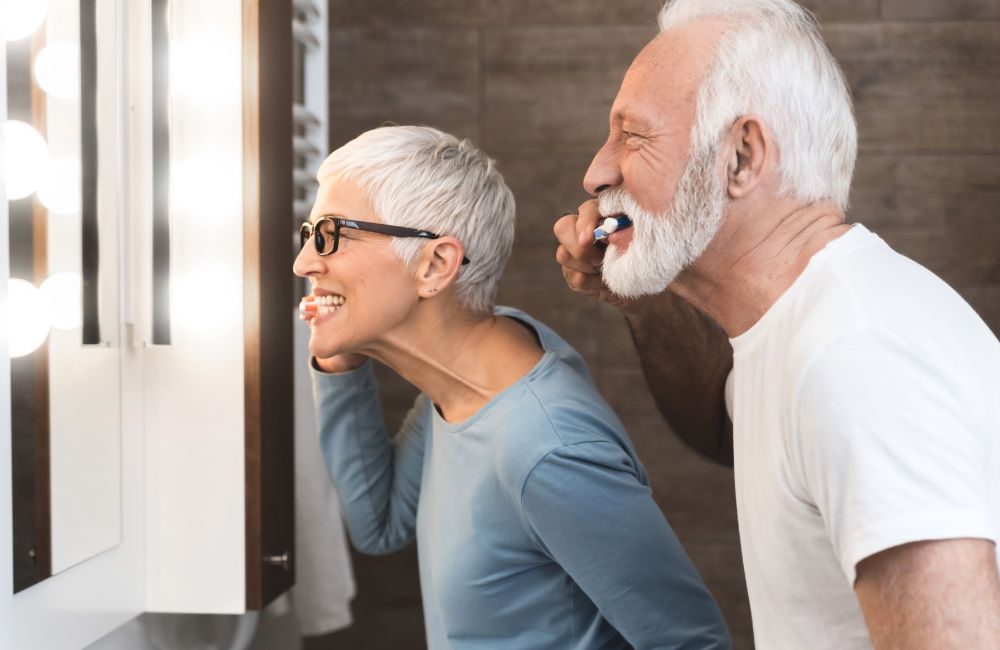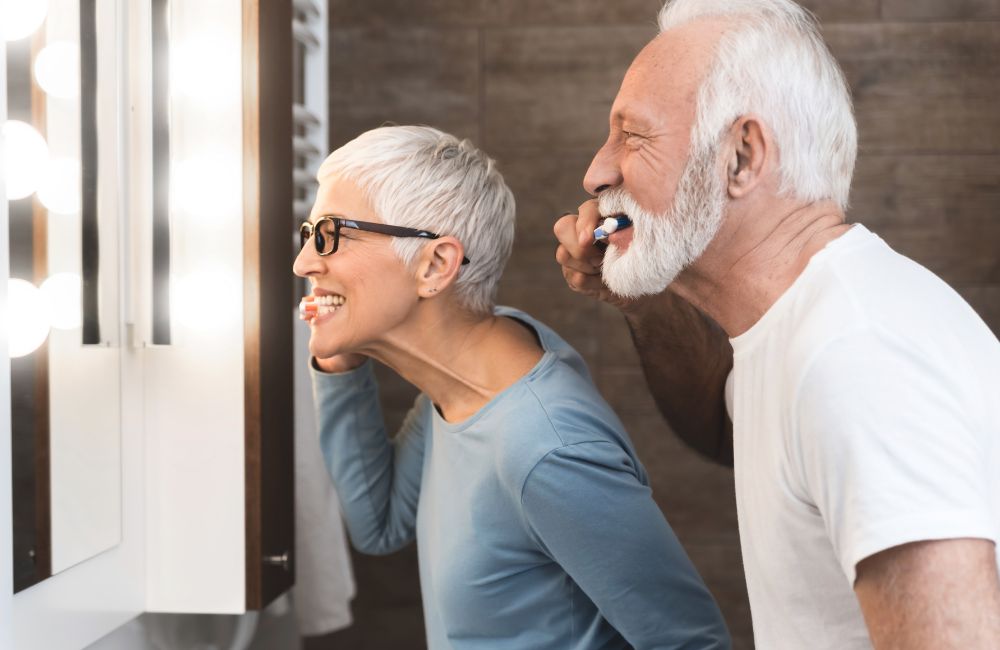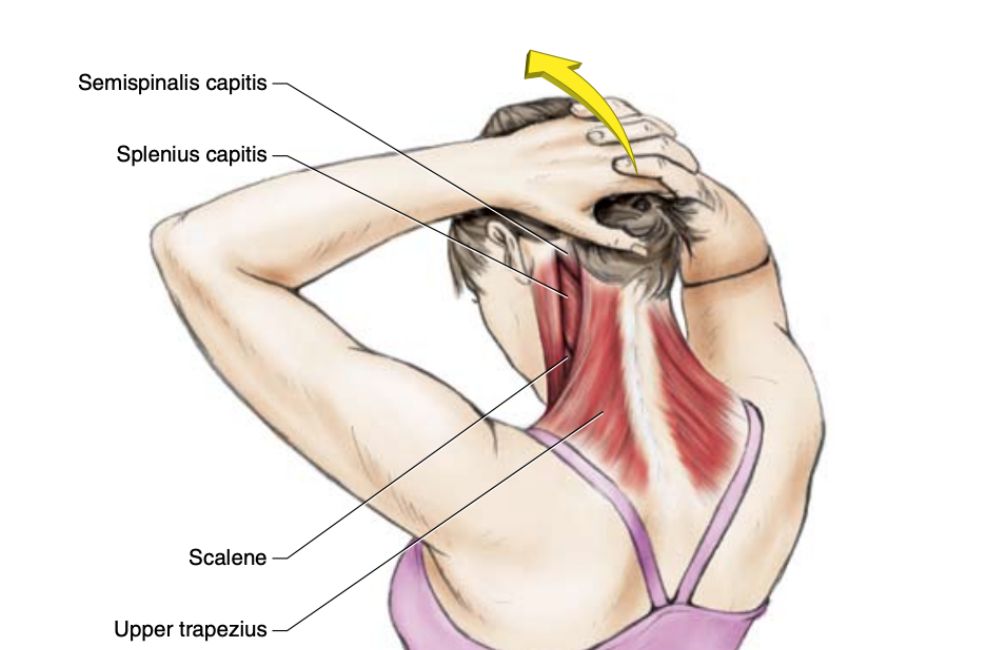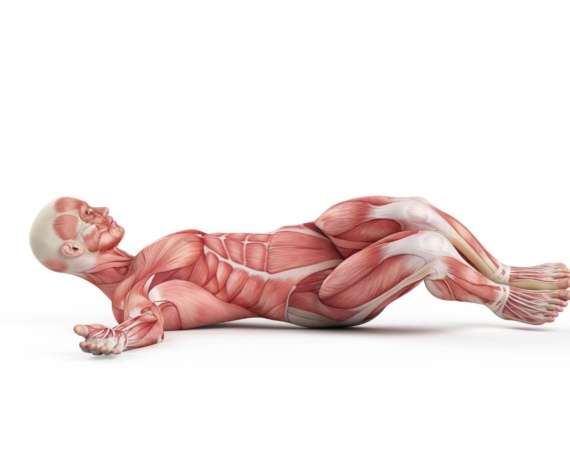
Learn how doing this simple thing every time you brush your teeth can have a huge impact on your health and well-being.
Most research seems to agree: multitasking is not a real phenomenon. Our brains simply don’t work that way.
Even those who say that multitasking does exist, they still grant that the practice does not lead to better productivity.
However, assuming a specific posture while you complete a task is, perhaps, one example of multitasking that we can all get behind.
For example, you can simply balance on one leg while you brush your teeth. By doing so, you’ll realize a number of health benefits.
In this article, I’ll outline some of the major ways in which balancing on one leg for the short time it takes you to brush your teeth every day can lead to awesome improvements in your health!

1. Decreased Asymmetries
Most of us have one or more asymmetrical features throughout our bodies.
For example, you might have some weakness or pain in one of your legs, which causes you to limp. As a result, you’ll likely have weaker muscles in one of your legs, and stronger muscles in the other.
You can perform bilateral exercises, such as squats, to correct these asymmetries. However, it is often more effective to perform unilateral exercises, such as single-leg stands,
2. Improved Balance
As we get older, falls become scary prospects. Falling in your 60s, 70s, and 80s can often lead to a cascade of events that ultimately ends in death.
By working on your balance throughout life, you can decrease the chances of falling. Single-leg balancing is one of the best ways to improve your stability and balance.
3. Better Brain Health
The body-brain connection is incredibly important.
You are probably already aware that your brain controls virtually everything that happens in your body. However, you may not know that there are physical exercises and activities that you can perform which may lead to improved brain health.
In particular, balance exercises and one-sided exercises seem to have a profound effect on brain health. These movements force us to correct our posture if we lose our balance and they activate many different parts of our brain, which we require for coordination and other body skills.
4. Increased Bone Strength
Our bones serve as the structural support for the rest of our body. They allow us to move, provide protection for our important organs, and serve many other functions.
But for a variety of reasons, bones tend to weaken as we age.
Certain diets can help with bone strength, but exercise goes a long way toward keeping our bones sturdy throughout life.
Walking and lifting weights are great activities for improving bone strength. However, even the simple act of balancing on one leg can increase and maintain bone density as well.
5. Optimized Posture
When we stand on two legs, we can often get by with a suboptimal posture. However, standing on one leg narrows our base of support and forces us to stand up tall.
By practicing this pose regularly, you can, over time, improve your posture.
The Bottom Line
Standing on one leg provides a host of benefits, some of which may seem counterintuitive at first blush.
However, you may not be ready right now to start balancing on one leg during your morning and evening dental routine. If this applies to you, consider trialing one or more of the following modifications to the single-leg stand.
- Hold onto a steady surface with your free hand. If your sink is well-secured, feel free to place a fingertip (or your whole hand) on it to help you keep steady. As time goes by, try to reduce your reliance on this stable surface in order to increase the demands of the exercise.
- Actively keep your abs tight. A strong core can help to keep you stable. These muscles keep us in good alignment and achieving better core stability is associated with better balance. When you first start, you may have to actively focus on keeping your core strong. As time goes by, you’ll start to do this naturally!
- Decrease the time spent balancing. You don’t have to balance for the whole tooth-brushing episode off the bat. You may only be able to balance for half of the time when you start, or even less. That’s ok! Do what you can and steadily increase your balance time as the days go by.
On the other hand, if you find balancing on one leg during your tooth-brushing routine to be too easy, try these progressions!
- Close your eyes. We rely heavily on our vision for balance. By closing your eyes, you can greatly increase the difficulty of this balance exercise. Just be careful if you decide to try this!
- Stand on a pillow or soft surface. A softer, more compliant surface makes it harder for us to balance.
- Rise up on your toes. By narrowing your base of support even further, you can make this exercise much more difficult. You’ll also get a great calf workout with this modification.
What is your current level of single-leg standability? Try this tooth-brushing routine out and see what you can do!
Works Cited
- Madore, K. P., & Wagner, A. D. (2019). Multicosts of Multitasking. Cerebrum : the Dana forum on brain science, 2019, cer-04-19.
- van Dieën, J. H., van Leeuwen, M., & Faber, G. S. (2015). Learning to balance on one leg: motor strategy and sensory weighting. Journal of neurophysiology, 114(5), 2967–2982. https://doi.org/10.1152/jn.00434.2015


